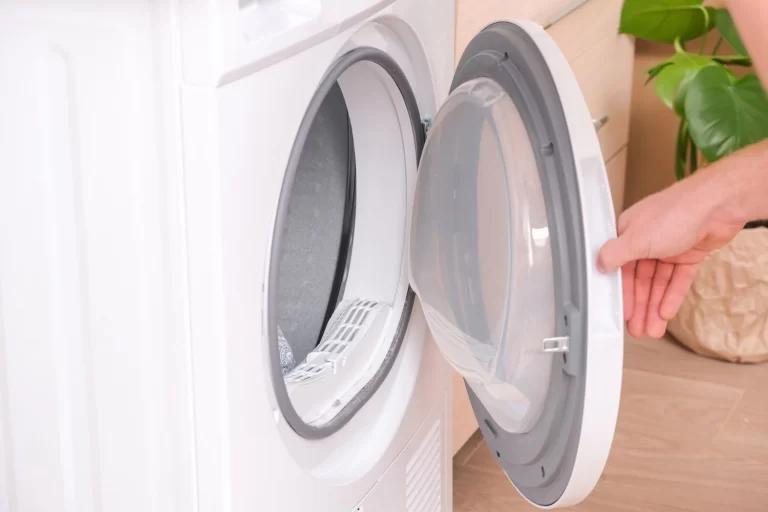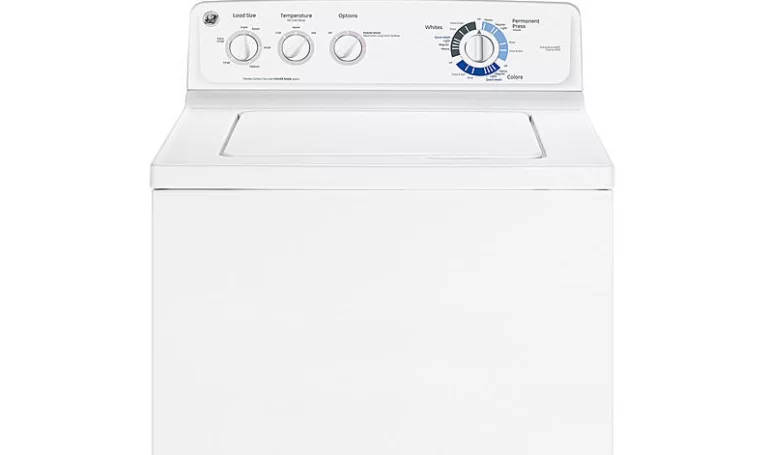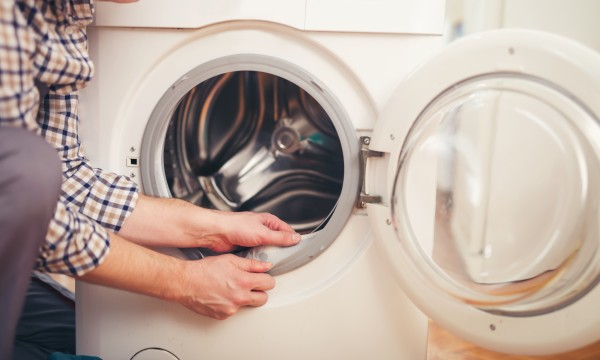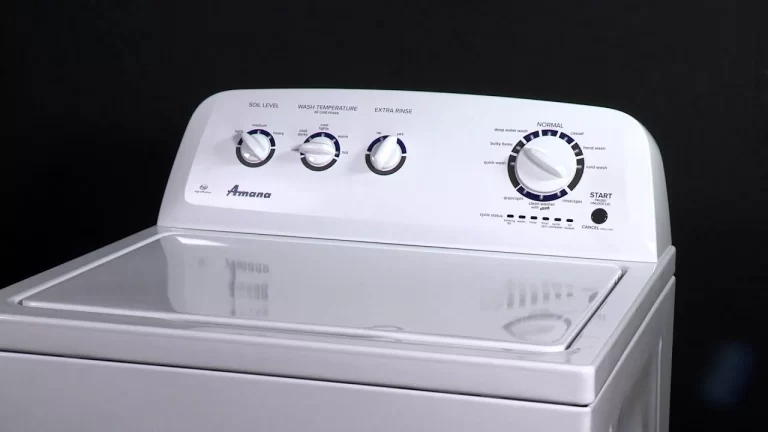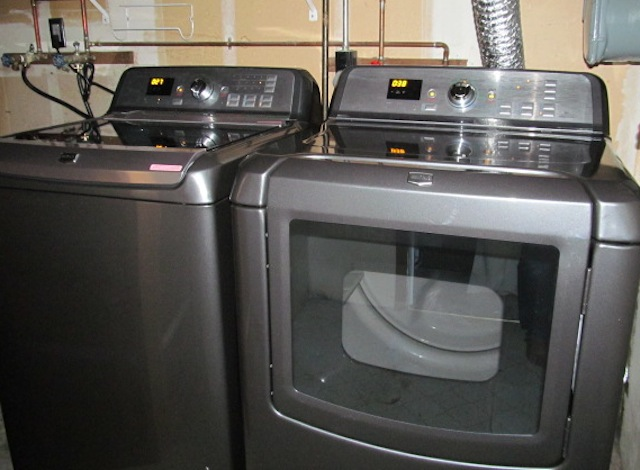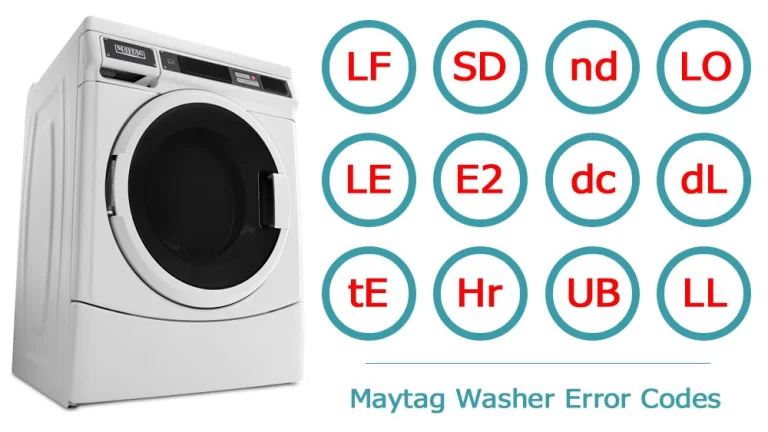Is your Amana washer stuck on the wash cycle, leaving your clothes soaking in soapy water? Don’t despair! This common problem may stem from several possible issues. This guide explores ten common causes, their symptoms, and how to fix them, offering you the key to restoring your appliance to its prime function.
If your Amana washer is stuck on the wash cycle, it could be due to a faulty lid switch, a broken drive belt, or a defective water level switch. More advanced models might face software glitches. Each of these issues prevents the machine from advancing to the rinse or spin stages.
Quick Troubleshooting Guide
| Issue | Symptoms | Fix |
| Faulty Lid Switch | Washer does not spin or drain | Replace the lid switch |
| Broken Drive Belt | Agitator or drum does not spin | Replace the drive belt |
| Defective Water Level Switch | Washer overfills or does not fill | Replace the water level switch |
| Malfunctioning Timer | Washer does not advance to next cycle | Check and replace timer if necessary |
| Blocked Pressure Hose | Washer does not fill or overfills | Clean the hose, or replace it if necessary |
| Defective Door Lock | Washer does not move to the next cycle | Replace the door lock if damaged |
| Clogged Drain Hose | Washer does not drain properly | Clean out the hose or replace it if damaged |
| Faulty Water Inlet Valve | Washer overfills or does not fill | Check for damage or corrosion, replace if necessary |
| Damaged Agitator | Clothes do not move properly during wash | Replace the agitator if it’s broken or worn out |
| Control Board Issues | Washer does not transition to rinse or spin cycle | Check for burns or damaged components, replace if necessary |
Understanding Your Amana Washer and Its Issues

Amana washing machines, whether top-loading or front-loading models, are designed with complex systems to handle your laundry needs efficiently. These systems encompass several mechanical and electrical components working in harmony. Despite the high-quality construction and reliable performance, your Amana washer, like any other appliance, can encounter issues that disrupt its operation.
When we say a washing machine is “stuck on a cycle,” it means the machine doesn’t advance to the next phase of the washing process. In simpler terms, your washer fills with water, agitates or tumbles the clothes, but doesn’t move to the rinse or spin stages. As a result, your laundry remains in soapy water, and the machine fails to complete its job.
This malfunction can occur due to various reasons. Here, we break down these issues into three main categories: mechanical problems, electrical issues, and software glitches.
Mechanical Problems: These are issues related to the physical parts of the machine, like the agitator in top-load models or the drum in front-load models. Other mechanical parts like the drive belt, motor, or pump may also experience wear and tear or damages that prevent the machine from advancing to the next cycle. For instance, if the drive belt that connects the motor to the drum is damaged, the drum may not spin properly, causing the washer to get stuck in the wash cycle.
Electrical Issues: Electrical problems can also cause your Amana washer to get stuck on the wash cycle. The washer relies on various electrical components, such as the lid switch, timer, and water level control, to operate effectively. A faulty lid switch, for example, might not signal the washer that the lid is closed, preventing the machine from moving to the rinse and spin cycles. Likewise, if the timer, which controls the length of each cycle, malfunctions, it could disrupt the progression of the wash cycle.
Software Glitches: With newer, technologically advanced models of Amana washers, software bugs or issues can affect the cycle sequence. These machines use control boards with embedded software to automate the washing process. If this software encounters a bug, it could prevent the machine from advancing to the next stage of the cycle.
Understanding these potential problems and their symptoms can aid in troubleshooting and possibly fixing the issue with your Amana washer. It’s crucial to remember that some fixes might require professional repair services to ensure safety and prevent further damage to the machine. Always consult the Amana washer manual or professional help if you’re uncertain about a particular issue or its resolution.
Common Symptoms of Amana Washer Problems
1. Faulty Lid Switch
If your Amana washer is stuck in the wash or rinse cycle, refusing to drain or move to the spin cycle, a faulty lid switch could be the culprit. The lid switch is a safety feature that tells the machine that the lid is properly shut. If it’s faulty, the washer may not recognize that the lid is closed, preventing the cycle from progressing.
Steps to Fix:
- Unplug the washer from the power source.
- Locate the lid switch, usually under the lid or the top panel of the machine.
- Using a multimeter, test the switch for continuity.
- If there’s no continuity, replace the lid switch. Consult your Amana washer manual for specific instructions on replacing the switch.
2. Broken Drive Belt
The drive belt connects the motor to the drum. If it’s damaged or worn out, the drum will not spin correctly. This issue will be apparent if the machine is making a loud noise during the wash cycle, or the drum isn’t turning at all.
Steps to Fix:
- Disconnect the washer from the power source.
- Open the machine’s back or bottom panel (as per your washer model).
- Inspect the drive belt. If it’s broken, stretched, or seems worn out, it needs replacement.
- Replace the drive belt with a new one. Make sure to refer to your user manual for the correct belt type and installation instructions.
3. Faulty Water Level Switch
If your washer is overfilling, underfilling, or not filling at all, the water level switch could be to blame. This switch tells the machine when it has enough water for the wash cycle. If it’s defective, the washer might get stuck in the wash cycle because it can’t detect the proper water level.
Steps to Fix:
- Disconnect the power source.
- Locate the water level switch, usually found behind the control panel.
- Check the switch and the tube connected to it for any signs of damage.
- If damaged, replace the switch or tube.
4. Worn Out Motor Coupling
The motor coupling connects the motor to the transmission. If it’s worn out or broken, the washer may fill with water and agitate, but not spin, leading to it being stuck in the wash cycle.
Steps to Fix:
- Unplug the washer.
- Access the motor coupling, typically found between the motor and the transmission.
- Inspect the coupling for signs of wear or damage.
- If it’s defective, replace the motor coupling.
5. Damaged Timer
The timer controls most of the operating functions of the washer. If it’s faulty, the washer might not progress from the wash cycle to the rinse or spin cycle.
Steps to Fix:
- Disconnect the power source.
- Remove the control panel to access the timer.
- Inspect the timer for any signs of burning or damaged contacts.
- If defective, replace the timer.
6. Defective Door Lock
On a front-loading Amana washer, if the door lock is faulty, the machine won’t move to the next cycle. This can leave the washer stuck in the wash or rinse cycle.
Steps to Fix:
- Disconnect the washer from the power supply.
- Access the door lock, usually located at the front where the door closes.
- Inspect the lock for any signs of physical damage.
- If the lock is damaged or faulty, replace it.
7. Clogged Drain Hose

If the drain hose is clogged, the washer may not be able to drain properly, causing it to be stuck in the wash cycle.
Steps to Fix:
- Disconnect the power and water supply.
- Access the drain hose located at the back of the washer.
- Check the hose for any obstructions or kinks.
- Clean out the hose or straighten it if it’s kinked. If the hose is damaged, replace it.
8. Faulty Water Inlet Valve
If the water inlet valve is defective, the washer may either overfill or not fill at all. Both cases could leave the washer stuck in the wash cycle.
Steps to Fix:
- Disconnect the washer from the power source.
- Access the water inlet valve, typically located at the back where the water hoses connect.
- Inspect the valve for any signs of damage or corrosion.
- If the valve is faulty, replace it.
9. Damaged Agitator
If the agitator is damaged, the washer may not be able to move the clothes properly during the wash cycle, leaving the machine stuck in this cycle.
Steps to Fix:
- Disconnect the power supply.
- Inspect the agitator for any signs of physical damage.
- If the agitator is broken or worn out, replace it.
10. Control Board Issues
The control board governs all washer operations. If it’s faulty, the washer may get stuck on the wash cycle, not transitioning to the rinse or spin cycle.
Steps to Fix:
- Disconnect the power source.
- Access the control board, typically located behind the control panel.
- Look for any signs of burns or damaged components.
- If the control board is defective, it usually needs to be replaced. However, because of the complexity and cost associated with this repair, it’s typically best to hire a professional.
When to Seek Amana Washer Service

If DIY methods fail to fix the issue, it might be time to call for professional repair. Professional technicians have the necessary tools and knowledge to safely and accurately diagnose and repair the problem.
The average cost of a washer repair ranges between $120 and $500, depending on the issue. Compare this to the cost of a new Amana washer, typically ranging from $400 to $800, to determine the most cost-effective choice.
Preventing Washer Issues
While it’s impossible to avoid all washer issues, certain preventative measures can increase the lifespan of your Amana washing machine and help minimize the likelihood of problems, including those that cause the washer to get stuck on a cycle. Here are some ways to prevent common washer issues:
- Regular Maintenance: One of the best ways to keep your washer running smoothly is to maintain it regularly. This includes cleaning the drum, dispensers, and any removable parts, as per your user manual’s guidelines. For example, running a monthly cleaning cycle can help prevent residue buildup that might affect the machine’s performance.
- Correct Loading of Clothes: Overloading the washer can strain the motor, wear out the drive belt, and affect the agitator’s ability to move clothes around. Ensure you’re loading the right amount of laundry, and distribute it evenly in the drum.
- Proper Use of Detergent: Using too much detergent or the wrong type can lead to excess suds that the washer might struggle to rinse away, causing it to get stuck in the wash cycle. Always follow the detergent manufacturer’s recommended amount and ensure the detergent is suitable for your washer model.
- Inspect Hoses Regularly: Regularly check the water hoses for signs of wear or damage, and ensure they’re securely connected. A leaky hose can cause water supply issues, while a clogged drain hose might prevent the washer from draining correctly.
- Protect From Power Surges: Power surges can damage the electrical components in your washer. Using a surge protector can help safeguard these components.
- Update Software: For smart washers, ensure the software is up-to-date. Manufacturers often release updates to fix bugs and improve performance.
- Immediate Repair: If you notice something unusual with your washer, such as strange noises, excess vibration, or cycle irregularities, don’t ignore these signs. The earlier you catch and repair an issue, the less likely it is to cause more significant, potentially costly problems.
FAQs
What should I do if my Amana washer gets stuck in the middle of the wash cycle?
Start by checking for common issues like a faulty lid switch, broken drive belt, or defective water level switch. If the problem persists or you’re uncomfortable troubleshooting on your own, consider reaching out to a professional repair service.
Can overloading the washer cause it to get stuck in the wash cycle?
Yes, overloading your washer can strain various components, including the motor and drive belt, potentially causing the machine to get stuck in the wash cycle. Always follow the manufacturer’s guidelines on load size to avoid such issues.
How often should I perform maintenance tasks on my Amana washer?
Regular maintenance is crucial for optimal performance. Ideally, you should clean your washer’s drum, dispensers, and removable parts once a month or as recommended in your user manual. Regularly check the hoses and other visible parts for signs of wear or damage.
What kind of detergent is best for preventing washer issues?
Use a high-efficiency (HE) detergent if you have an HE washer, as these detergents create fewer suds and rinse out more effectively. Always follow the detergent manufacturer’s recommended dosage to avoid excess suds that can cause issues.
Should I attempt to repair my Amana washer myself if it gets stuck on the wash cycle?
While some common issues, like a clogged drain hose, might be fixable with DIY methods, many problems involve complex components that require professional handling. If you’re unsure about a problem or its solution, it’s best to consult a professional to avoid causing further damage or compromising safety.
Conclusion
Navigating the troubleshooting process when your Amana washer is stuck on the wash cycle can be daunting. However, by understanding the potential causes, recognizing the symptoms, and applying the appropriate fixes, you can save time and possibly even the expense of a professional service call. Remember, when in doubt, always consult an appliance repair professional to ensure your washer’s longevity and optimal performance.

